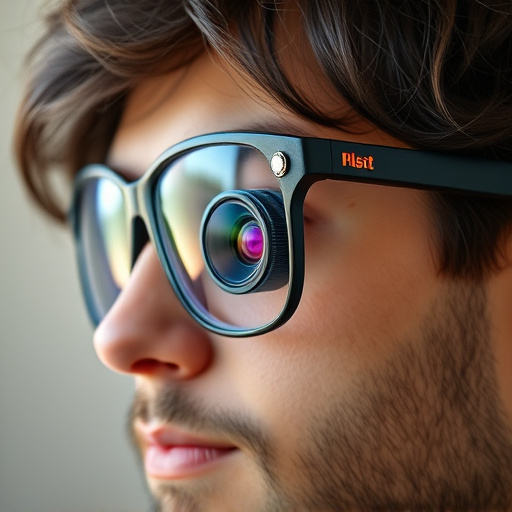The evolution of glasses has been revolutionized by technology, transforming them from simple vision aids into multifunctional smart devices. Modern glasses with a camera built in offer unique features like capturing high-quality videos and photos, recording audio notes, and facilitating video calls while keeping hands free. This trend reflects the growing demand for versatile, connected devices that cater to today's multimedia-rich lifestyles. Integrating technology into everyday wearables like these glasses aims to seamlessly blend physical and digital worlds, with potential applications in augmented reality promising a future where moment capturing and sharing becomes as natural as putting on a pair of glasses.
“Revolutionizing wearable technology, glasses with a camera built-in are transforming how we capture and share moments. This evolution extends beyond basic vision aids into the realm of multimedia devices. From their historical roots to modern advancements, smart eyewear now offers integrated cameras and audio capabilities. This article delves into the functionalities, benefits, and unique perspectives these glasses bring, from everyday vlogging to professional applications in diverse fields. Additionally, it explores crucial design, privacy, and ethical considerations shaping this emerging technology.”
The Evolution of Glasses: From Vision Aids to Multimedia Devices
The evolution of glasses has come a long way from simple vision aids to multifunctional multimedia devices, thanks to technological advancements. Historically, glasses were designed primarily to correct vision, but with the integration of cameras and audio capabilities, they are transforming into wearable, hands-free technology. This shift is particularly evident with the rise of glasses with a camera built in, which offer users a unique perspective by capturing both visual and auditory experiences.
Today’s smart glasses go beyond traditional optical wear, providing users with the ability to capture high-quality videos and photos, record audio notes, and even facilitate video calls—all while leaving their hands free. This evolution reflects a growing demand for versatile devices that cater to modern lifestyles, where convenience, connectivity, and multimedia consumption are paramount.
– Exploring the concept of integrating technology into wearable items
Integrating technology into everyday wearable items, such as glasses equipped with cameras, is an intriguing concept that has gained significant traction in recent years. The idea behind this innovation is to create seamless fusion between our physical and digital worlds, making technology more accessible and less obtrusive. With glasses featuring built-in cameras, users can capture moments, record memories, and even enhance their visual experience without the need for bulky devices.
This concept pushes the boundaries of what wearable tech can achieve, offering a unique blend of functionality and style. Glasses with camera technology not only provide an alternative to traditional cameras but also have potential applications in various fields, from photography and videography to augmented reality experiences. By embracing this integration, we could see a future where capturing and sharing moments becomes as natural as putting on a pair of glasses.
– Historical context: The journey from basic glasses to smart eyewear
The evolution of eyewear has come a long way, from simple tools designed to correct vision to advanced smart devices. The concept of integrating technology into glasses gained traction with the introduction of glasses with a camera built-in, marking a significant shift in the industry. This innovation sparked curiosity and paved the way for the development of smart eyewear. Initially, these cameras were rudimentary, serving primarily as tools for capturing memories and documents up close. Over time, as technology advanced, so did the capabilities of these wearable cameras.
The journey from basic glasses to smart eyewear involves a blend of optical science, computer engineering, and consumer demand. As manufacturers began to experiment with adding digital features, they recognised the potential for enhanced functionality. Today, glasses with a camera built-in offer not just visual assistance but also audio capabilities, enabling hands-free communication and recording. This transformation reflects a broader trend in wearable technology, where convenience, connectivity, and versatility are at the forefront of design considerations.
